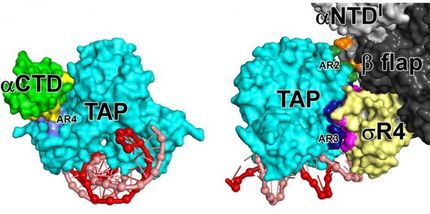Mechanism involved in novel drug design with potential to treat tuberculosis
A team of researchers from Instituto de Medicina Molecular (iMM) Lisboa successfully used a pioneer method to chemically modify a protein's components with potential medical applications and an impact in the fight against tuberculosis.
To design novel drugs it is essential to understand the molecular mechanisms that make up proteins of pathogenic bacteria. The team, led by Gonçalo Bernardes, used an innovative methodology that allows protein alteration in their native state along with organic chemistry, biological computation, biophysics and biochemistry techniques to modify proteins involved in infectious diseases.
Researchers were able to identify a novel molecular mechanism that works as a shield in a family of proteins that are present in pathogenic bacteria, named phosphates. In particular, the team observed the presence of a structural water molecule in a specific area that protects the protein of being inactivated by oxidative processes.
These results may impact the fields of medical chemistry and molecular medicine because they reveal a novel defence mechanism used by these pathogenic proteins which may prove essential in the way we think about novel drug design, particularly to increase specificity, potency and efficacy of future clinical tests.
Most read news
Topics
Organizations

Get the analytics and lab tech industry in your inbox
By submitting this form you agree that LUMITOS AG will send you the newsletter(s) selected above by email. Your data will not be passed on to third parties. Your data will be stored and processed in accordance with our data protection regulations. LUMITOS may contact you by email for the purpose of advertising or market and opinion surveys. You can revoke your consent at any time without giving reasons to LUMITOS AG, Ernst-Augustin-Str. 2, 12489 Berlin, Germany or by e-mail at revoke@lumitos.com with effect for the future. In addition, each email contains a link to unsubscribe from the corresponding newsletter.


























































